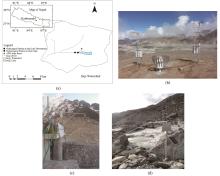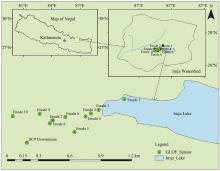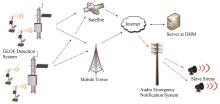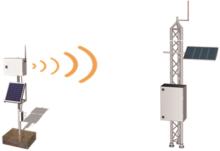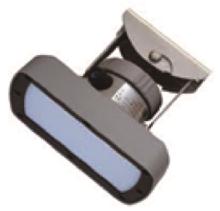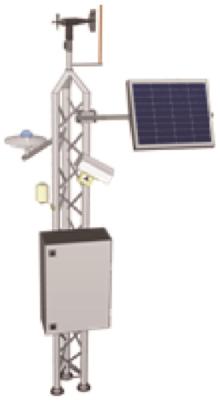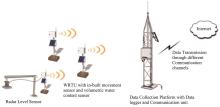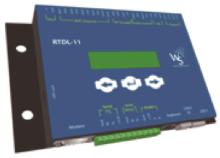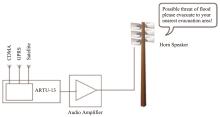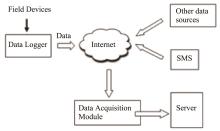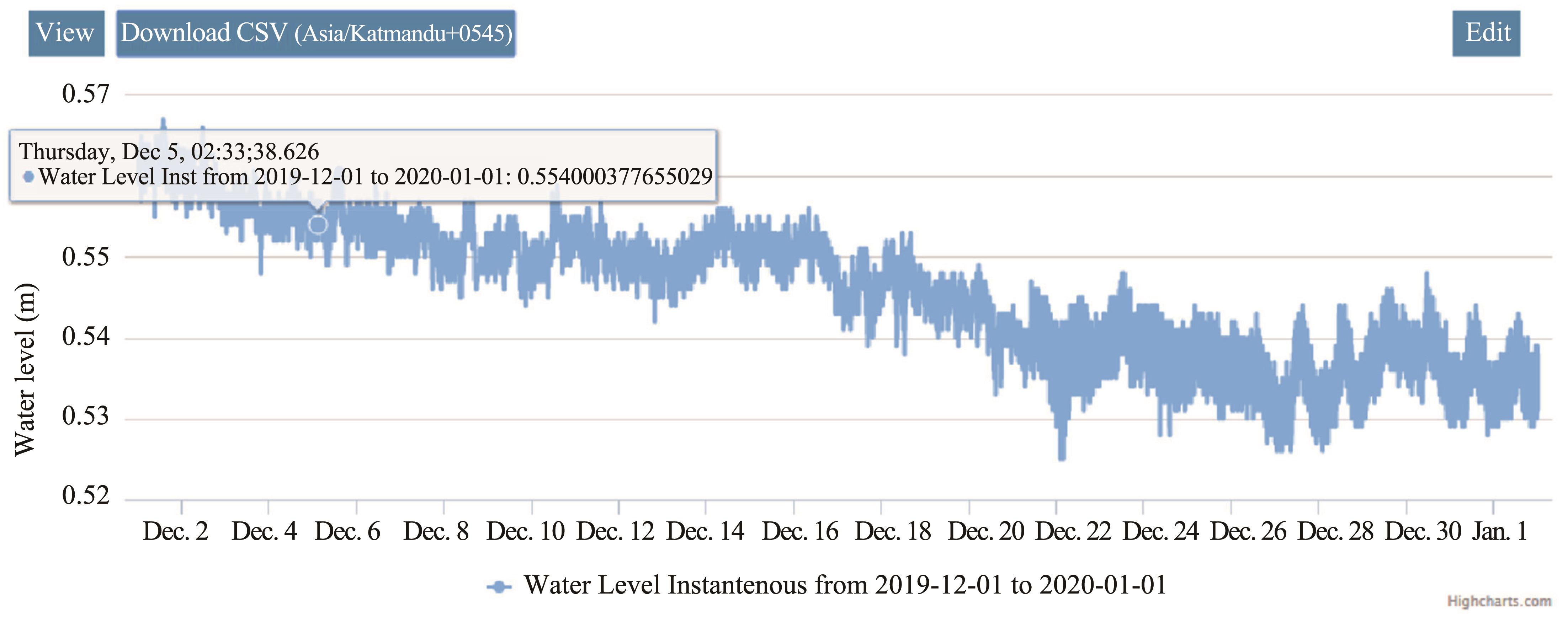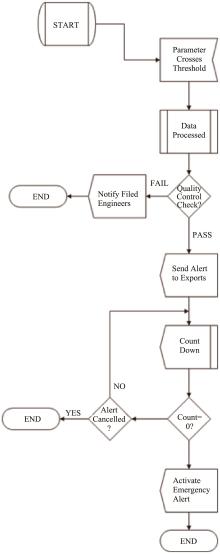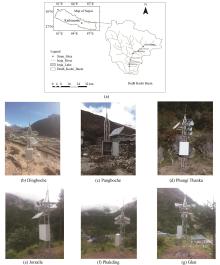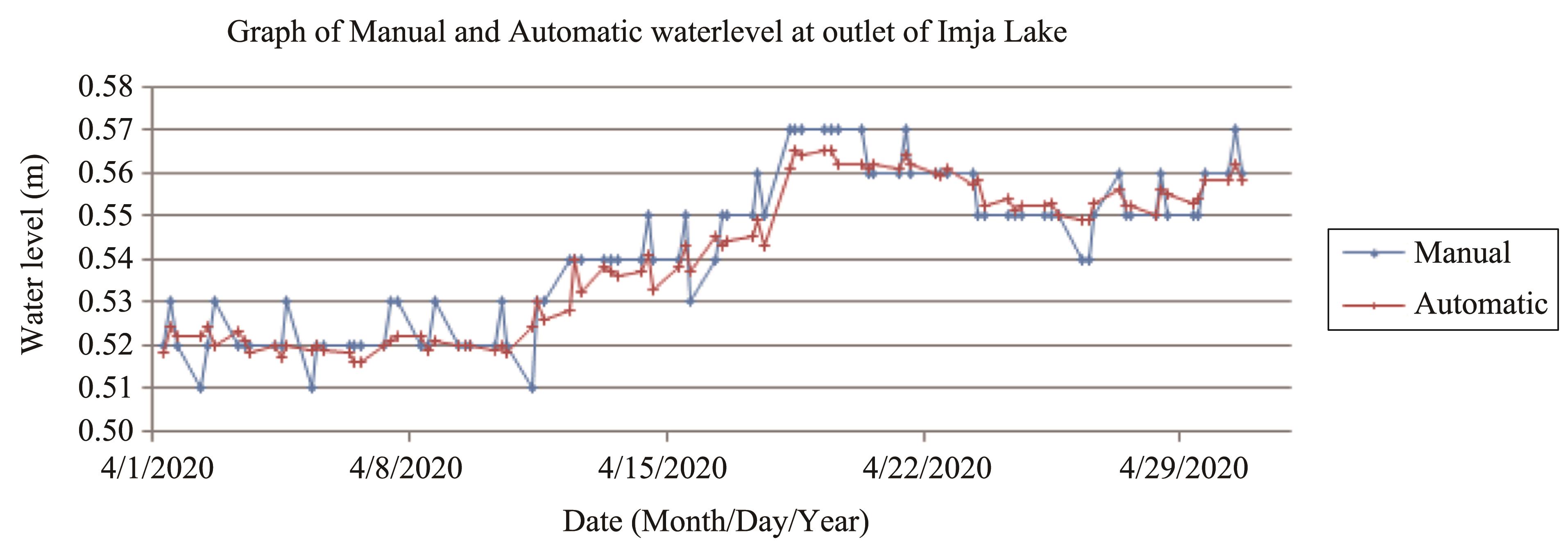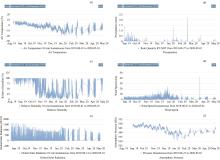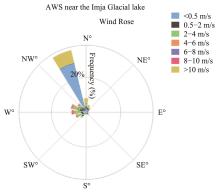Sciences in Cold and Arid Regions ›› 2021, Vol. 13 ›› Issue (3): 206–219.doi: 10.3724/SP.J.1226.2021.20076.
Overview of an early warning system for Glacial Lake outburst flood risk mitigation in Dudh-Koshi Basin, Nepal
Sanjaya Gurung1( ),Saroj Dhoj Joshi1,Binod Parajuli2
),Saroj Dhoj Joshi1,Binod Parajuli2
- 1.Real Time Solutions Pvt. Ltd. , Lalitpur 44700, Nepal
2.Department of Hydrology and Meteorology, Kathmandu 44600, Nepal
| Alberta Water SMART, 2014. Alberta innovation energy and environment solutions, Flood Forecasting Jurisdictional Review. | |
| Bajracharya SR, Mool PK, Shrestha BR, 2007. Impact of climate change on Himalayan glaciers and glacial lakes: Case studies on GLOF and associated hazards in Nepal and Bhutan, Kathmandu: ICIMOD. | |
| Bajracharya SR, Mool PK, Shrestha BR, 2008. Global climate change and melting of Himalayan glaciers. In: Ranade PS (ed.) Melting Glaciers and Rising Sea Levels: Impacts and Implications. Hyderabad: Icfai University Press, pp. 28-46. | |
|
Bolch T, Kulkarni A, Kääb A, et al., 2012. The state and fate of Himalayan glaciers. Science, 336(6079): 310-314. DOI: 10. 1126/science.1215828.
doi: 10. 1126/science.1215828 |
|
| CEPTE/KU, 2012. Topographical Survey and Engineering Design of the Outlet Channel & Pre-feasibility Study for a Mini-Hydro Power Generation Facility from Imja Glacial Lake, Final Report Submitted to USAID ADAPT Asia-Pacific Suppor to UNDP/Nepal: Community Based GLOF & Flood Risk Reduction Project by Centre for Excellence in Production and Transportation of Electrical Energy (CEPTE/KU), Kathmandu: Kathmandu University. | |
|
Cogley JG, Kargel JS, Kaser G, et al., 2010. Tracking the source of glacier misinformation. Science, 327(5965): 522. DOI: 10.1126/science.327.5965.522-a.
doi: 10.1126/science.327.5965.522-a |
|
|
Gurung S, Bhattrai BC, Kayastha RB, et al., 2016. Study of annual mass balance (2011-2013) of Rikha Samba Glacier, Hidden Valley, Mustang, Nepal. Sciences in Cold and Arid Regions, 8(4): 0311-0318. DOI: 10.3724/SP.J.1226.2016. 00311.
doi: 10.3724/SP.J.1226.2016. 00311 |
|
| HiCCDRC, 2012. Kathmandu University: Pre-Feasibility Study for Developing a Design for a Community-Based Early Warning System for Tsho Rolpa Glacial Lake, DistrictDolakha, based on conducting a Reconnaissance Survey and gathering of all necessary data needed for the study, ReportFinal, CryosphereHimalayan, Climate and Disaster Research Center. | |
| ICIMOD, 2011. Glacial lakes and glacial lake outburst floods in Nepal, Kathmandu: ICIMOD. | |
|
Ives JD, Shrestha RB, Mool PK, 2010. Formation of glacial lakes in the Hindu Kush-Himalayas and GLOF risk assessment, Kathmandu: ICIMOD. DOI: ISBN/ISSN/DOI 9789291151370.
doi: ISBN/ISSN/DOI 9789291151370 |
|
|
Kulkarni AV, 1992. Mass balance of Himalayan glaciers using AAR and ELA methods. Journal of Glaciology, 38(128): 101-104. DOI: https://doi.org/10.3189/S0022143000009631.
doi: 10.3189/S0022143000009631 |
|
| Maskey R, Sanjay K, Rijan RB, et al., 2013. Water and Energy Security Mountainous Region of Nepal: Lesson from Dig-Tsho, Tsho-Rolpa and Imja Glacial Lakes. Community Based GLOF & Flood Risk Reduction Conference Paper Kathmandu University, pp. 13. | |
| Mool PK, Bajracharya SR, Joshi SP, 2001. Inventory of Glaciers, Glacial Lakes, and Glacial Lake Outburst Floods: Monitoring and Early Warning Systems in the Hindu Kush-Himalayan Regions-Nepal. Kathmandu: ICIMOD. | |
| Mool PK, 1995. Glacier lake outburst floods in Nepal. Journal of Nepal Geological Society, 11: 273-280. | |
| Shrestha MS, Kafle S, Gurung M, et al., 2014. Flood early warning systems in Nepal: A gendered perspective. ICIMOD Working Paper, Kathmandu: ICIMOD. | |
| UN, 2006. Global Survey of Early Warning Systems: An Assessment of Capacities, Gaps and Opportunities towards building a comprehensive global early warning system for all natural hazards, New York. USA: United Nations. | |
|
Wagnon P, Vincent C, Arnaud Y, et al., 2013. The cryosphere seasonal and annual mass balances of Mera and Pokalde glaciers (Nepal Himalaya) since 2007. The Cryosphere, 7(6): 1769-1786. DOI: 10.5194/tc-7-1769-2013.
doi: 10.5194/tc-7-1769-2013 |
|
| WMO, 1992. International Meteorological Vocabulary (WMO-No. 182), Geneva. | |
| WMO, 2008. Guide to Meteorological Instruments and Methods of Observation (WMO-No. 182), Geneva. | |
| WMO, 2010. Manual on the Global Observing System (WMO-No. 544), Volume I, Geneva. | |
| WMO, 2011. Manual on Flood Forecasting and Warning (WMO-No. 1072), Geneva. | |
| WMO, 2013. Integrated Flood Management Tools Series: Flood Forecasting and Early Warning, Geneva. | |
| WMO, 2014. Guide to Meteorological Observing and Information Distribution Systems for Aviation Weather Services (WMO-No. 731), Geneva. | |
| WMO, 2015. Seventeenth World Meteorological Congress: Abridged Final Report with Resolutions (WMO-No. 1157), Geneva. | |
| WMO, 2017. Common Alerting Protocol (CAP) Implementation Workshop 20-21 September 2017 in Rome, Italy. | |
| Yamada T, 1998. Glacier Lake and Its Outburst Flood in the Nepal Himalaya, Data Center for Glacier Research, Monograph No. 1. Tokyo: Japanese Society of Snow and Ice, Data Center for Glacier Research. | |
|
Zhang G, Yao T, Xie H, et al., 2015. An inventory of glacial lakes in the Third Pole region and their changes in response to global warming. Global and Planetary Change, 131: 148-157. DOI: 10.1016/j.gloplacha.2015.05.013.
doi: 10.1016/j.gloplacha.2015.05.013 |
| No related articles found! |
|
||

